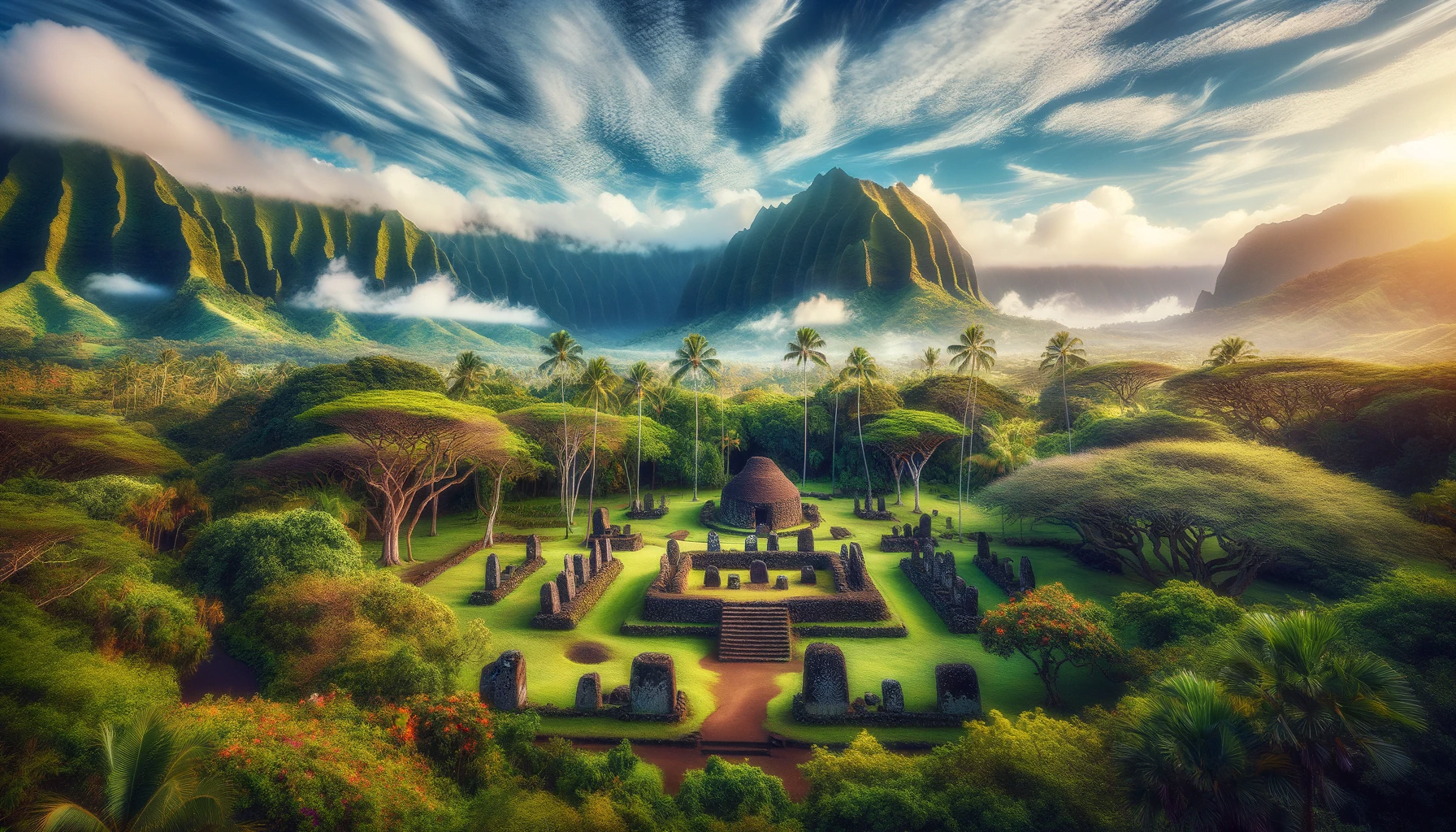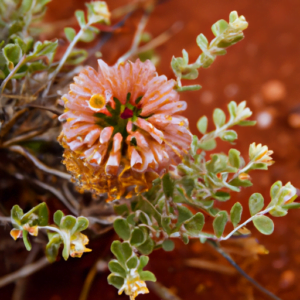If you’re a lover of history and culture, Hawaii offers a treasure trove of ancient temples known as heiaus. These sacred spaces not only showcase the architectural brilliance of the native Hawaiians but also provide a glimpse into their deep spiritual beliefs and traditions. With their lush surroundings and rich historical significance, exploring these heiaus can be an awe-inspiring experience that connects you to the island’s roots and leaves a lasting impression on your soul. So, put on your explorer’s hat and get ready to embark on an enchanting journey through the sacred spaces of Hawaii, immersing yourself in the beauty and spirituality of the native culture.
Table of Contents
Toggle1. Hawaii’s Heiaus: Hawaiian Ancient Temples
Hawaii’s heiaus, or ancient temples, hold great significance in the native Hawaiian culture. These sacred spaces were integral to the spiritual and communal practices of the indigenous people, serving as gathering places for religious ceremonies, rituals, and community events. They are not mere remnants of the past but continue to be an important part of Hawaiian identity and heritage. In this article, we will delve into the importance of heiaus, explore the different types found in Hawaii, discuss their significance in native practices, and highlight the ongoing efforts to preserve these ancient sites.
1.1 The Importance of Heiaus in Hawaiian Culture
Heiaus played a central role in the spiritual and cultural life of the ancient Hawaiians. These sacred spaces were dedicated to various deities and were essential in connecting the people to the spiritual realm. They served as places of worship, offering a way for the community to communicate with their gods and seek their blessings. Heiaus were also important gathering places where the Hawaiians would come together to celebrate significant events, such as births, marriages, and harvest festivals. They were not only places of religious importance but also served as centers for education and the passing down of traditional knowledge from one generation to another.
1.2 Types of Heiaus Found in Hawaii
There are several types of heiaus that can be found across the Hawaiian Islands, each with its own unique purpose and function. Some of the most common types include:
- Heiau Kuula: These temples were dedicated to the god Kuula, who was believed to be the guardian of fishermen. Heiau Kuula were built close to the shoreline and served as places of prayer and offerings for a bountiful catch.
- Heiau Kupapau: Also known as burial temples, Heiau Kupapau were where the ali’i (chiefs) and other important individuals were laid to rest. These heiaus were highly sacred and were constructed on sacred grounds chosen by the ruling chiefs.
- Heiau Hale O Papa: These heiaus were dedicated to Papa, the goddess of fertility and mother earth. They were often associated with agricultural practices and were places where the Hawaiians sought divine intervention to ensure successful harvests.
- Heiau Luakini: These were the largest and most sacred heiaus, reserved for the highest form of worship and offerings. Heiau Luakini were often dedicated to the war god, Kukailimoku, and were places of great spiritual power.
1.3 Significance of Heiaus in Native Practices
Heiaus are an integral part of native Hawaiian practices and continue to hold deep spiritual and cultural significance in the community. These ancient temples provide a connection to the past, allowing the current generation to honor their ancestors and maintain their cultural identity. They serve as reminders of the Hawaiians’ deep respect for the land and their recognition of the intricate relationship between humans and nature. Heiaus also play a role in the perpetuation of traditional knowledge and practices, ensuring that the ancient wisdom is carried forward for future generations. Furthermore, the presence of heiaus in the Hawaiian landscape serves as a reminder of the resilience and strength of the native people, their ability to adapt, and their unwavering connection to their roots.
1.4 Preservation Efforts and Challenges
Preserving the heiaus is of paramount importance to ensure the cultural integrity and heritage of the Hawaiian people. However, there are several challenges associated with their preservation. One major challenge is the erosion and degradation of the sites due to natural processes and human activity. Over the centuries, weathering, vegetation growth, and human development have taken a toll on these ancient structures. Additionally, the popularity of tourism in Hawaii has led to increased visitation to heiaus, raising concerns about the potential damage caused by unregulated foot traffic. Efforts to strike a balance between promoting responsible tourism while preserving the sacredness of these sites are crucial. Fortunately, there are ongoing preservation initiatives, both at the state and community levels, aimed at protecting and conserving these cultural treasures. Through community engagement, education, and the establishment of guidelines and regulations, these efforts focus on ensuring the long-term viability and cultural significance of heiaus.
2. Heiaus Across the Hawaiian Islands
The Hawaiian Islands are home to numerous heiaus, each with its unique stories and cultural significance. From the bustling island of Oahu to the lush landscapes of Maui, let’s explore some of the notable heiaus found throughout the archipelago.
2.1 Oahu: Exploring the Sacred Sites
Oahu, known as “The Gathering Place,” has a rich history of ancient temples. One of the most significant heiaus on the island is the Pu’u O Mahuka Heiau, located on the North Shore. This massive heiau offers breathtaking views of the coastline and honors the god of agriculture, Lono. Visitors to Oahu can also explore the Kaneaki Heiau, tucked away in the Kalihi Valley. Dedicated to the god Kane, this heiau is a serene and sacred site where visitors can feel a deep connection to the land and its history.
2.2 Maui: Where Ancient Hawaiian Rituals Still Echo
Maui, known as the Valley Isle, is steeped in ancient history and is home to several significant heiaus. The Haleki’i-Pihana Heiau State Monument in Wailuku is one such site. This heiau once served as a place of royal residence and was dedicated to the god of rain, Lono. Another notable heiau is the Waihee Coastal Dunes and Wetlands Refuge. This sacred site, overlooking the ocean, is not only steeped in history but is also a sanctuary for various native Hawaiian plants and animals.
2.3 Hawai’i Island: Home to the Most Significant Heiaus
Hawai’i Island, also known as the Big Island, is home to some of the most significant and impressive heiaus in the entire archipelago. One iconic heiau is Pu’ukohola Heiau, located on the Kohala Coast. Built by King Kamehameha I, this heiau played a pivotal role in his quest to unite the Hawaiian Islands. Another noteworthy heiau is the Pu’uhonua o Hōnaunau National Historical Park, which we will explore in more detail in section 3.
2.4 Kauai: Unveiling the Mysteries of the Garden Isle’s Heiaus
Kauai, known as the Garden Isle, is adorned with lush landscapes and holds its share of sacred sites. One such heiau is the Hikinaakala Heiau, located near the Wailua River. This heiau was dedicated to the god Lono and was an important center for celestial observations and agricultural ceremonies. Another notable heiau on Kauai is the Polihale Heiau, located on the west side of the island. This heiau is known for its commanding presence, offering breathtaking views of the Pacific Ocean.
2.5 Molokai: Discovering the Hidden Gems
Molokai, often referred to as the Friendly Isle, is a lesser-known destination that holds hidden gems of ancient Hawaiian temples. The Kalaupapa National Historical Park on Molokai is home to several heiaus and holds great cultural significance for the native people. Visitors to the island can also explore the Kauleonanahoa Heiau, situated near the Halawa Valley. This heiau, dedicated to the shark god Kamohoalii, offers a glimpse into the spiritual beliefs and practices of ancient Hawaiians.
3. Pu’uhonua o Hōnaunau National Historical Park
3.1 A Glimpse into Hawaiian History
Pu’uhonua o Hōnaunau National Historical Park, located on Hawai’i Island, offers visitors a unique opportunity to step back in time and immerse themselves in the rich history of the Hawaiian people. This sacred site was once a place of refuge, where individuals seeking spiritual and physical healing, as well as those who had violated the strict kapu (taboos), could find solace and forgiveness.
3.2 The Importance of Pu’uhonua in Native Culture
Pu’uhonua, meaning “place of refuge,” played a critical role in the native Hawaiian culture. In ancient times, breaking a kapu was a serious offense punishable by death. However, those who reached the pu’uhonua were granted amnesty and a chance to start anew. It was believed that stepping onto the sacred grounds of Pu’uhonua o Hōnaunau cleansed the individual of their transgressions and offered them protection.
3.3 Exploring the Sacred Grounds
Visitors to Pu’uhonua o Hōnaunau National Historical Park can explore the extensive grounds and gain insight into the lives of the ancient Hawaiians. The park is home to several reconstructed structures, including temples, royal residences, and gathering areas. The Hale o Keawe Temple, dedicated to the deified ancestors, is a focal point of the park and offers a glimpse into the Hawaiians’ deep reverence for their lineage.
The park also features a series of ki’i (carved wooden images) that serve as guardians of the sacred grounds. These ki’i, representing various gods and ancestral spirits, stand as a testament to the spiritual beliefs and practices of the native people.
3.4 Traditional Ceremonies and Practices
Today, Pu’uhonua o Hōnaunau National Historical Park continues to be a place of cultural preservation and celebration. Visitors have the opportunity to witness and participate in traditional ceremonies and practices that have been carried on for generations. From hula performances to demonstrations of ancient Hawaiian crafts, these experiences offer a deeper understanding of the native culture and provide a profound connection to the land and its history.
4. Wahi Pana: Hawaiian Sacred Sites
4.1 Understanding the Concept of Wahi Pana
Wahi Pana, translated as “legendary places,” are sacred sites scattered across the Hawaiian Islands that are steeped in folklore, mythology, and historical significance. They are places where the stories, traditions, and identities of the native people are deeply intertwined with the land. Wahi Pana represent the enduring connection between the Hawaiians and their ancestors, offering a glimpse into the collective memory of the community.
4.2 Examples of Noteworthy Wahi Pana in Hawaii
Throughout the Hawaiian Islands, there are numerous Wahi Pana that hold immense cultural value and capture the essence of the native people. One such example is the Waimea Valley on Oahu, known as the “Valley of the Priests.” This lush valley is home to numerous archaeological sites, temples, and botanical gardens, offering visitors a chance to explore the rich cultural heritage of the area.
Another noteworthy Wahi Pana is the Iao Valley on Maui. This sacred site is the location of the iconic Iao Needle, a towering rock formation that holds great spiritual significance for the native people. Visitors can hike through the valley, immersing themselves in its natural beauty and historical heritage.
4.3 The Connection between Wahi Pana and Native Identity
Wahi Pana serve as a crucial link to the native identity, allowing the Hawaiians to maintain a strong connection to their ancestral lands and history. These sacred sites embody the values and beliefs of the community, reminding them of their inherent connection to the land, the ocean, and the cosmos. By preserving and honoring these Wahi Pana, the native people ensure the continuation of their cultural heritage and protect the stories and practices that have shaped their identity for centuries.
4.4 Recommended Wahi Pana Tours and Experiences
To fully experience the magic of Wahi Pana, guided tours and immersive experiences are highly recommended. Many tour operators offer excursions that provide in-depth insights into the cultural significance of these sacred sites. These tours often include storytelling sessions, traditional ceremonies, and exploration of the natural wonders surrounding the Wahi Pana. By engaging with knowledgeable guides and participating in these experiences, visitors can gain a deeper understanding and appreciation for the rich cultural tapestry of Hawaii.
5. Cultural Significance of Ancient Temple Architecture
5.1 Exploring Traditional Hawaiian Architecture
The architecture of ancient Hawaiian temples, or heiaus, is not only visually striking but also deeply rooted in the cultural and spiritual practices of the native people. The design and construction of heiaus were carefully guided by cultural beliefs and served as a physical manifestation of the Hawaiians’ relationship with the divine. Understanding the architectural elements of heiaus offers valuable insights into the native culture and their reverence for both the natural and spiritual realms.
5.2 Symbolism and Design Elements
Hawaiian temple architecture was characterized by its simplicity, symmetry, and integration with the surrounding environment. Heiaus were often constructed using natural materials such as volcanic rocks, corals, and wood. The design of the heiaus typically followed a rectangular or quadrilateral shape, representing the realms of the gods. The use of sacred geometric proportions, such as the Fibonacci sequence, further emphasized the spiritual significance of these structures.
5.3 Integration of Nature and Spirituality
One of the most prominent features of Hawaiian temple architecture is the seamless integration of nature and spirituality. Heiaus were often situated in locations that were believed to have strong spiritual energy, such as near the ocean, mountains, or freshwater sources. The use of natural materials and the incorporation of surrounding elements, such as trees and stones, were intentional, reflecting the Hawaiians’ belief in the inherent spiritual power of the land and the interconnectedness of all living beings.
5.4 Influence on Modern Architecture and Design
The influence of traditional Hawaiian temple architecture can be seen in modern architecture and design across the Hawaiian Islands. Elements such as open-air courtyards, natural materials, and the integration of indoor and outdoor spaces are frequently incorporated in contemporary structures, paying homage to the ancient traditions. Adapting these design principles allows for a harmonious connection between humans and the natural environment, creating spaces that are not only aesthetically pleasing but also spiritually enriching.
6. Traditional Practices and Rituals at Heiaus
6.1 Overview of Hawaiian Ceremonial Practices
Hawaiian ceremonial practices at heiaus were diverse and reflected the intricate spirituality of the native people. These practices encompassed various rituals, songs, dances, and offerings, all aimed at establishing a connection between the human and divine realms. Ceremonies were often led by kahunas, Hawaiian priests who held deep knowledge of the spiritual practices and acted as intermediaries between the people and the gods.
6.2 Protocols and Etiquette When Visiting Heiaus
When visiting heiaus, it is important to approach these sacred sites with respect and reverence. Following certain protocols and etiquette ensures the preservation of the cultural integrity of these places. Visitors are advised to be mindful of their actions, to not disturb any rocks or artifacts, and to refrain from climbing on the structures. Additionally, it is important to dress modestly and practice quiet contemplation to maintain the sacredness of the space.
6.3 The Role of Kahunas (Hawaiian Priests)
Kahunas, recognized for their spiritual insight and wisdom, played a vital role in Hawaiian religious practices and rituals at the heiaus. These revered priests possessed vast knowledge of ancient chants, prayers, and offerings. They were responsible for conducting ceremonies, interpreting omens, and guiding the community in matters of spirituality and healing. The kahunas held a deep connection with the natural world and were well-versed in the traditions and protocols associated with the heiaus.
6.4 Purification Rituals and Offerings
Purification rituals and offerings were integral to Hawaiian ceremonial practices at heiaus. These rituals were aimed at cleansing and purifying the space, as well as establishing a harmonious relationship with the gods. Waiwai, or water, played a central role in purification rituals, symbolizing cleansing and renewal. Offerings such as flowers, fruits, and fish were made to the gods, expressing gratitude and seeking their blessings. These rituals and offerings were an ongoing practice, ensuring the connection between the people and their deities was maintained.
7. Challenges and Controversies Surrounding Heiaus
7.1 Cultural Appropriation and Commercialization
One of the significant challenges surrounding heiaus in Hawaii is the issue of cultural appropriation and commercialization. Some individuals and businesses have exploited the sacredness of these sites for personal gain, without proper respect for their cultural and spiritual significance. This appropriation and commodification of native practices can erode the authenticity and integrity of the heiaus, diminishing their importance to the Hawaiian people.
7.2 Balancing Tourism and Conservation
The increasing popularity of tourism in Hawaii has brought increased visitors to the heiaus. While tourism offers an opportunity for cultural exchange and education, it also presents challenges in terms of preserving and protecting these ancient sites. Striking a balance between sharing the cultural heritage of the heiaus with visitors and ensuring their conservation is a delicate task that requires thoughtful planning, community involvement, and responsible tourism practices.
7.3 Protection against Vandalism and Theft
Heiaus, like any historical and sacred sites, are vulnerable to vandalism and theft. The removal of artifacts, graffiti, and intentional damage poses a significant threat to the preservation of these cultural treasures. Robust security measures, community vigilance, and public education play a crucial role in protecting heiaus from such destructive activities and ensuring their longevity.
7.4 The Role of Local Communities in Preservation
Local communities in Hawaii play a vital role in the preservation of the heiaus. The knowledge, engagement, and involvement of the Hawaiian community are key to ensuring the protection and continuation of their cultural heritage. By actively participating in preservation efforts, sharing their traditional practices and stories, and having a say in the management of these sites, local communities can safeguard the integrity of the heiaus and ensure their cultural legacy is upheld.
8. Cultural Education and Sensitivity
8.1 Understanding the History and Context
Cultural education and understanding the historical context are crucial when visiting heiaus in Hawaii. It is essential to learn about the native Hawaiian culture, its traditions, and the historical significance of these sacred sites. By educating oneself about the cultural heritage of the Hawaiian people, visitors can approach the heiaus with respect, appreciation, and a deeper understanding of their significance.
8.2 Respecting Sacred Spaces and Practices
Respecting the sacredness of the heiaus requires visitors to understand and adhere to certain practices and protocols. Being aware of cultural customs, dressing modestly, being mindful of noise levels, and refraining from touching or removing any artifacts are essential elements of showing respect for these sacred spaces. By approaching the heiaus with reverence and cultural sensitivity, visitors can contribute to the preservation and protection of these ancient sites.
8.3 Importance of Learning from Native Communities
Learning from and engaging with native communities is vital to gain a holistic understanding of the heiaus and their cultural significance. The Hawaiian people are the custodians of their own heritage and hold deep knowledge of the practices, stories, and traditions associated with the heiaus. By listening to their perspectives, participating in cultural programs, and supporting native-led initiatives, visitors can gain a more profound and authentic understanding of these sacred spaces.
8.4 Resources for Cultural Education
There are various resources available for individuals interested in deepening their cultural understanding of the heiaus. Local museums, cultural centers, and educational programs provide insights into the history, traditions, and the spiritual practices associated with these ancient temples. Books, documentaries, and online platforms are also valuable tools for learning about the cultural heritage of the Hawaiian people. Engaging with these resources will enable visitors to embark on their sacred journey with a wealth of knowledge and a deeper connection to the land.
9. Indigenous Perspectives on Heiaus
9.1 Hawaiian Elders and their Wisdom
Hawaiian elders, or kupuna, hold a wealth of wisdom and knowledge passed down through generations. Their perspectives on heiaus and the cultural practices associated with them offer valuable insights into the spiritual and historical significance of these sacred sites. By listening to the stories and wisdom of the kupuna, visitors can gain a deeper appreciation for the heiaus and the indigenous cultural heritage of Hawaii.
9.2 Revitalizing Native Practices
Revitalizing native practices associated with heiaus is an essential aspect of preserving the cultural integrity of the Hawaiian people. Native communities are actively engaged in revitalizing traditional ceremonies, songs, dances, and crafts associated with the heiaus. These efforts not only ensure the continuation of the practices but also provide a source of cultural pride and empowerment for the native community.
9.3 Building Bridges between Cultures
The heiaus serve as a bridge between cultures, allowing for a deeper understanding and appreciation of the native Hawaiian people. By engaging in respectful dialogue, cultural exchange, and collaboration, individuals from different backgrounds can build connections and foster a shared sense of cultural appreciation. Building bridges between cultures encourages mutual understanding, respect, and the celebration of diversity.
9.4 Preserving and Celebrating Indigenous Knowledge
Preserving and celebrating indigenous knowledge associated with the heiaus is vital for the cultural survival and thriving of the Hawaiian people. Recognizing the value and importance of traditional practices, wisdom, and stories ensures that the heiaus remain a symbol of native identity and a testament to the enduring spirit of the Hawaiian people. By actively supporting efforts to preserve and celebrate indigenous knowledge, individuals can contribute to the cultural vitality and well-being of the Hawaiian community.
10. Embarking on Your Sacred Journey
10.1 Planning Your Visit to Sacred Sites
Embarking on a sacred journey to the heiaus requires careful planning and preparation. Before visiting, it is important to research the specific heiaus, their cultural significance, and any protocols or guidelines that must be followed. Understanding the historical context and purpose of the heiaus will allow visitors to approach the sacred sites with reverence and appreciation.
10.2 Tour Options and Guided Experiences
There are various tour options and guided experiences available for those who wish to explore the heiaus. Guided tours led by knowledgeable guides offer in-depth insights into the cultural significance and history of these sacred sites. Visitors can learn about the ancient traditions, experience traditional ceremonies, and gain a deeper understanding of the native Hawaiian culture.
10.3 Responsible Tourism Practices
Responsible tourism practices are essential when visiting the heiaus. These include respecting the sacredness of the sites, adhering to any protocols or guidelines, and reducing the ecological impact on the surrounding environment. By practicing mindfulness, cultural sensitivity, and responsible behavior, visitors can contribute to the preservation of these important cultural sites and ensure their sustainability for future generations.
10.4 Personal Reflection and Connection to the Land
Visiting the heiaus offers a personal journey of reflection and connection to the land. As you explore these sacred sites, take the time to immerse yourself in the surroundings and to reflect on the spiritual, cultural, and historical significance of the heiaus. Find moments of stillness to appreciate the beauty and sacredness of the environment, and allow yourself to be inspired by the wisdom and resilience of the Hawaiian people. Your sacred journey will not only deepen your understanding of the native culture but also foster a profound connection to the land and its ancient heritage.
In conclusion, Hawaii’s heiaus hold immense cultural, historical, and spiritual significance for the native Hawaiian people. These ancient temples are not only physical structures but gateways to the past, connecting the present generation with their ancestors and serving as symbols of cultural resilience. By exploring the different types of heiaus, understanding their significance in native practices, and appreciating their architectural and spiritual aspects, individuals can embark on a sacred journey that transcends time and culture. With responsible tourism practices, cultural education, and respect for the sacred spaces and practices, the heiaus can be celebrated, preserved, and safeguarded for future generations to experience and cherish.





